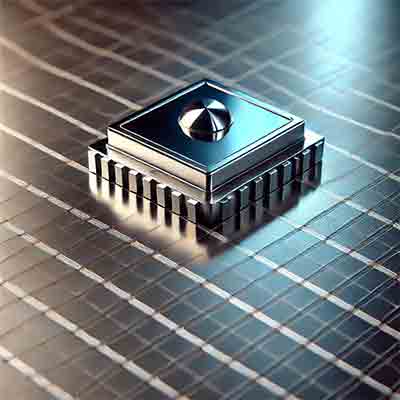What Substrates are Used in Laser Diode Research and Fabrication?
How We Help Researchers with Their Laser Diode Research
A corporate scientist requested a quote for the following project.
Reference #251658 for specs and pricing.
Get Your Quote FAST! Or, Buy Online and Start Researching Today!
What are Laser Diodes?
Laser diodes, also known as semiconductor lasers, are light-emitting devices that produce coherent and  monochromatic light. They consist of a p-n junction formed by a p-type semiconductor and an n-type semiconductor, which is placed within a cavity that provides feedback to the light produced. When a current is applied, electrons and holes recombine in the junction and produce light. The light is then amplified and confined within the cavity to produce a laser beam. Laser diodes are compact, efficient, and have a fast response time, making them useful in a wide range of applications, such as optical communication, laser printing, and laser scanning. They also find use in scientific and industrial applications, such as spectroscopy and material processing.
monochromatic light. They consist of a p-n junction formed by a p-type semiconductor and an n-type semiconductor, which is placed within a cavity that provides feedback to the light produced. When a current is applied, electrons and holes recombine in the junction and produce light. The light is then amplified and confined within the cavity to produce a laser beam. Laser diodes are compact, efficient, and have a fast response time, making them useful in a wide range of applications, such as optical communication, laser printing, and laser scanning. They also find use in scientific and industrial applications, such as spectroscopy and material processing.
What Substrates Are Used to Fabricate Lasers Diodes?
The substrate used to fabricate laser diodes is typically a material that provides a smooth, uniform, and electrically insulating surface on which to grow the active layer of the laser diode. Some common substrates used in laser diode fabrication include:
- Silicon (Si): Silicon is a commonly used substrate due to its availability, low cost, and compatibility with silicon-based microelectronics.
Diameter: 200 mm (8 inches)
- Thickness: 725 ± 25 µm
- Type: P-type
- Resistivity: 0.1-1 ohm-cm
- Orientation: <111>
- Surface Finish: Double side polished
- Application: Essential in optoelectronics research, especially for light-emitting diodes (LEDs) and laser diodes, providing the necessary structural and electrical characteristics.
- Gallium Arsenide (GaAs): GaAs is a commonly used substrate for high-performance laser diodes due to its high electron mobility, which results in fast response times.
- Indium Phosphide (InP): InP is a high-performance substrate that is commonly used for high-power laser diodes and for lasers operating in the near-infrared spectral range.
- Sapphire (Al2O3): Sapphire is a hard and durable substrate that is commonly used for laser diodes that need to withstand harsh environments.
- Zinc Selenide (ZnSe): ZnSe is a substrate that is commonly used for laser diodes operating in the mid-infrared spectral range.
These are just a few examples of substrates commonly used for laser diode fabrication. The choice of substrate depends on the specific requirements of the laser, such as the wavelength of the light produced, the power output, and the operating environment.
